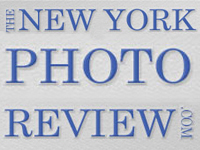
By Barbara Cofino
On view at the Hasted Hunt Kraeutler Gallery are Edward Burtynsky’s large-scale black and white images of Shipbreaking in Bangladesh.
Wittingly or not, he takes as his model the work of the great American Civil War photographers, Brady, Sullivan, and Gardner, an apt choice as the atmosphere of war is writ large in all these pictures and we have no doubt we are witnessing the aftermath of a kind of battle.
But the battle we are witnessing is a battle with things, with monumental artifacts that seem to be at war with the Earth, puncturing it like asteroids from outer space.
Taking as his subject these hulks we litter our world with, the industrial and chemical monstrosities we create but cannot easily dispose of, Burtynsky originally worked in large format Polaroid before transferring the material to C prints.
In this group he deliberately exaggerated the textures of the Polaroid media, using its chemical scars and streaks to create a gestural level on top of the historical one, thereby treating time and decay in a pictorial as well as factual language.
Another device that underscores the link with 19th century photography, as well as the importance of time, is the long exposure. Just as in those older images, Burtnysky’s people stand before the devastation in a kind of shock. They could just as well be soldiers posing outside a field tent in Gettysburg, or standing before the burnt out ruins of Atlanta.
Then, during the long exposure one moves, adding a particularized and
human element of pathos to the larger drama, for the small man in the
large landscape is blurred, as if time had wiped him out.
The subtlety of Burtynsky’s framing increases the grand grignol character of the scenes, giving them an element (but not too much) of theatricality and displaying his keen eye for sculptural form. But unlike Michael Kenna, whose estheticism carries all before it, Burtynsky’s sense of form and texture is always restrained. Tempering any tendency to estheticize disaster is the presence of pure filth.
By refusing to succumb to either Neue Sachlichkeit facelessness or Westonian formalism, he has achieved that difficult balance between personal vision and objective testimony--rendering the fact the Angel of Death passed before his camera all the more powerfully revealed.